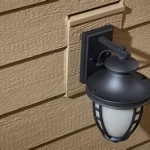How To Paint Wooden Outdoor Stairs
Maintaining wooden outdoor stairs requires regular upkeep, including painting. A fresh coat of paint protects the wood from the elements, extending its lifespan, and enhances curb appeal. This guide outlines the necessary steps to effectively paint wooden outdoor stairs.
Preparation: The Foundation of a Successful Paint Job
Thorough surface preparation is critical for paint adhesion and longevity. Begin by cleaning the stairs. A stiff brush, detergent, and water are usually sufficient to remove dirt, mildew, and loose debris. A pressure washer can be used for heavily soiled stairs but should be operated with caution to avoid damaging the wood.
Once clean and dry, inspect the stairs for any damaged or rotted wood. Replace any compromised boards or sections to ensure a stable and safe structure. Loose nails should be hammered flush or replaced, and any gaps or cracks should be filled with wood filler. Allow the filler to dry completely according to the manufacturer's instructions.
Sanding: Creating a Smooth Surface
Sanding smooths the wood surface, promoting better paint adhesion. Start with a coarser grit sandpaper (e.g., 80-grit) to remove any remaining loose paint or rough patches. Gradually move to finer grits (e.g., 120-grit then 180-grit) to create a smooth finish. Be sure to sand in the direction of the wood grain. After sanding, thoroughly clean the stairs to remove all sanding dust using a tack cloth or a vacuum with a brush attachment.
Priming: Enhancing Adhesion and Protection
Applying a primer is essential, particularly for bare wood or previously painted surfaces in poor condition. Primer provides a uniform surface for the paint to adhere to, improves durability, and helps to seal the wood, preventing moisture penetration. Select an exterior-grade primer specifically designed for wood. Apply a thin, even coat of primer to all surfaces of the stairs, following the manufacturer's instructions for drying time.
Choosing the Right Paint: Durability and Aesthetics
Selecting the correct paint is crucial for long-lasting protection and desired aesthetics. Choose a high-quality exterior paint formulated for wood and designed to withstand foot traffic and weather exposure. Exterior paints are available in various finishes, from matte to gloss. A semi-gloss or gloss finish is generally recommended for stairs as they are more durable and easier to clean. Consider the surrounding environment when choosing a color.
Applying the Paint: Techniques for a Professional Finish
Before starting, ensure the stairs are completely dry and the weather conditions are suitable for painting. Avoid painting in direct sunlight or extreme temperatures. Stir the paint thoroughly before application. A high-quality brush is recommended for optimal control and precision, particularly for intricate areas. A roller can be used for larger, flat surfaces like the treads. Apply thin, even coats, working in the direction of the wood grain. Two or three coats may be required for optimal coverage and durability, allowing each coat to dry completely before applying the next.
Safety Precautions: Protecting Yourself and the Environment
When working with paint and other chemicals, it is crucial to prioritize safety. Wear appropriate safety gear, including gloves, eye protection, and a dust mask, especially during sanding and painting. Ensure adequate ventilation in the work area. Dispose of paint and other materials responsibly in accordance with local regulations.
Protecting the Surrounding Area: Cleanliness and Care
Before painting, protect the surrounding area from paint splatters. Use drop cloths, painter's tape, and masking paper to cover nearby surfaces. Clean up any spills or drips immediately to prevent staining. After painting, allow the stairs to dry thoroughly before allowing foot traffic.
Maintaining Your Painted Stairs: Longevity and Appearance
Regular maintenance will help prolong the life of your newly painted stairs. Sweep or wash the stairs periodically to remove dirt and debris. Inspect the paint for any signs of wear or damage, and address any issues promptly. Repainting may be necessary every few years, depending on the climate and wear and tear.
Tools and Materials Checklist: Ensuring Project Success
Having the necessary tools and materials readily available will contribute to a smooth and efficient painting process. This typically includes: stiff brush, detergent, pressure washer (optional), wood filler, putty knife, sandpaper (various grits), tack cloth or vacuum, exterior-grade primer, exterior wood paint, paintbrushes, paint roller and tray, drop cloths, painter's tape, masking paper, safety glasses, gloves, dust mask.

How To Paint Wooden Porch Steps In 4 Easy Hen And Horse Design

How To Paint Wooden Porch Steps In 4 Easy Hen And Horse Design

It Only Took Us A Year Painting The Exterior Stairs Yellow Brick Home

It Only Took Us A Year Painting The Exterior Stairs Yellow Brick Home

How To Paint Wooden Porch Steps In 4 Easy Hen And Horse Design

How To Paint An Exterior Staircase Doityourself Com

How To Paint Wooden Porch Steps In 4 Easy Hen And Horse Design

Staining The Deck Stairs Southern Hospitality

Exterior Painting 08 Front Porch Steps Paint House
Best Heavy Traffic Exterior Paint For Wood Stairs Diy Home Improvement Forum
Related Posts







